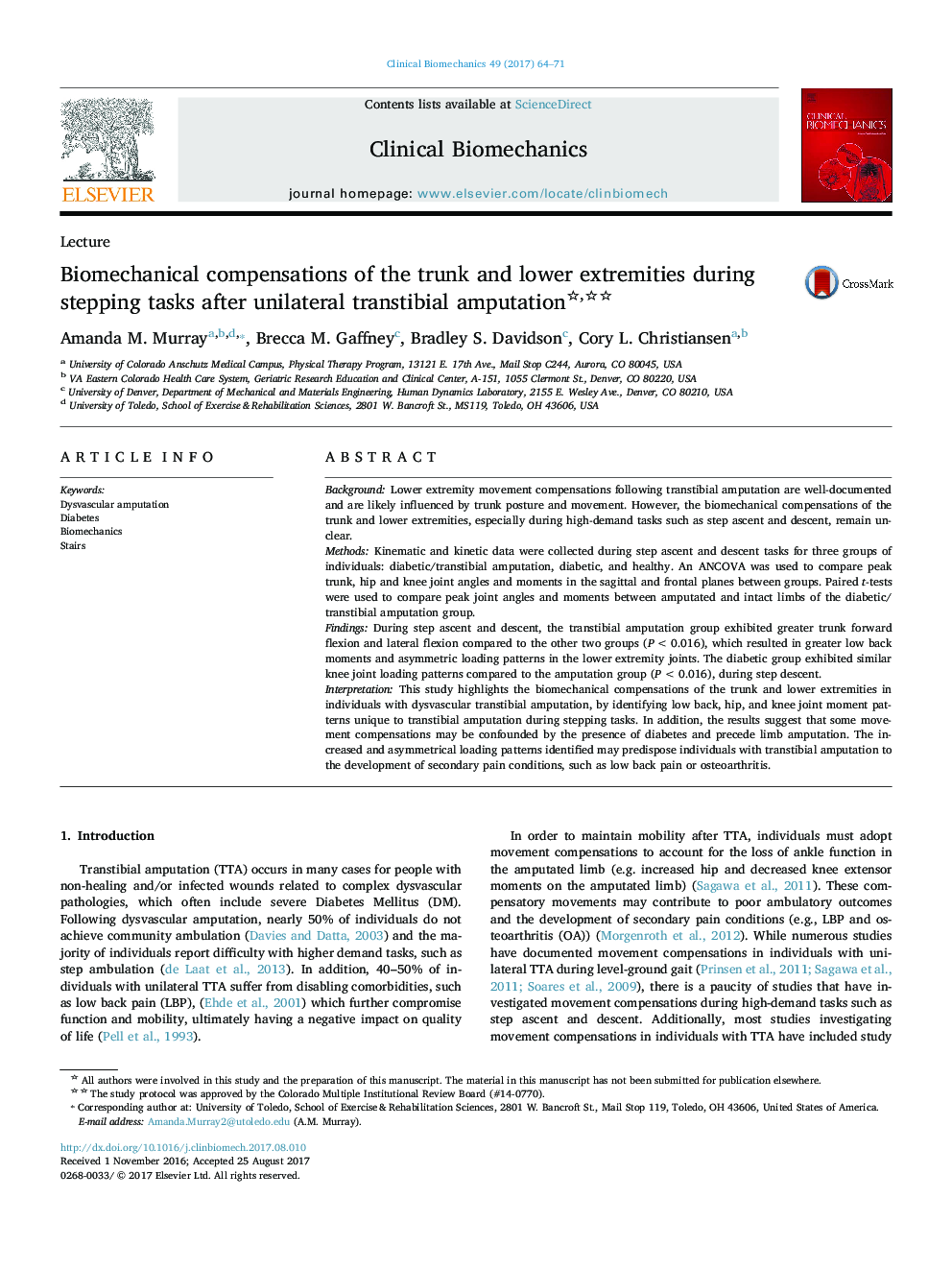| Article ID | Journal | Published Year | Pages | File Type |
|---|---|---|---|---|
| 5706968 | Clinical Biomechanics | 2017 | 8 Pages |
Abstract
This study highlights the biomechanical compensations of the trunk and lower extremities in individuals with dysvascular transtibial amputation, by identifying low back, hip, and knee joint moment patterns unique to transtibial amputation during stepping tasks. In addition, the results suggest that some movement compensations may be confounded by the presence of diabetes and precede limb amputation. The increased and asymmetrical loading patterns identified may predispose individuals with transtibial amputation to the development of secondary pain conditions, such as low back pain or osteoarthritis.
Keywords
Related Topics
Health Sciences
Medicine and Dentistry
Orthopedics, Sports Medicine and Rehabilitation
Authors
Amanda M. Murray, Brecca M. Gaffney, Bradley S. Davidson, Cory L. Christiansen,
